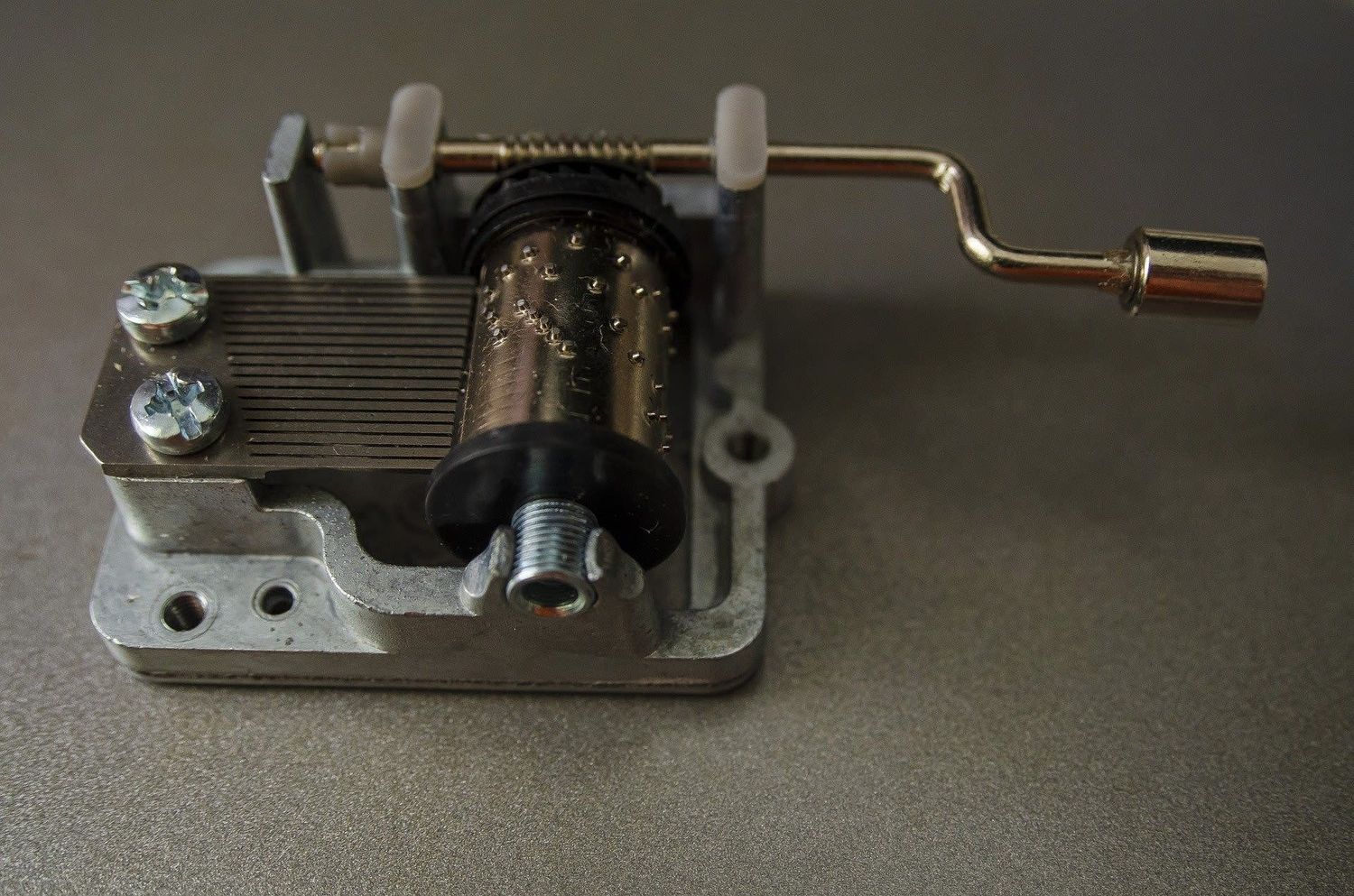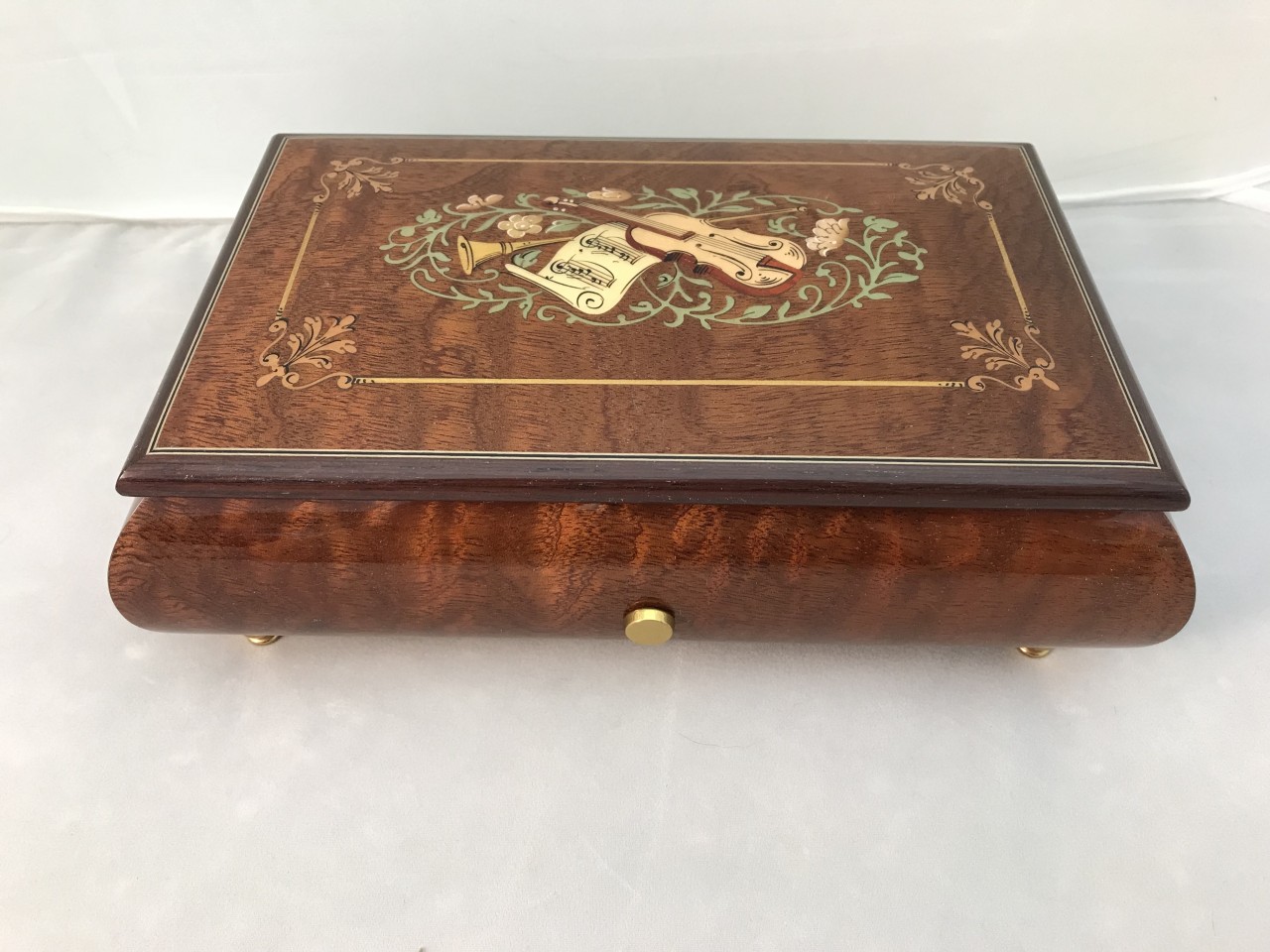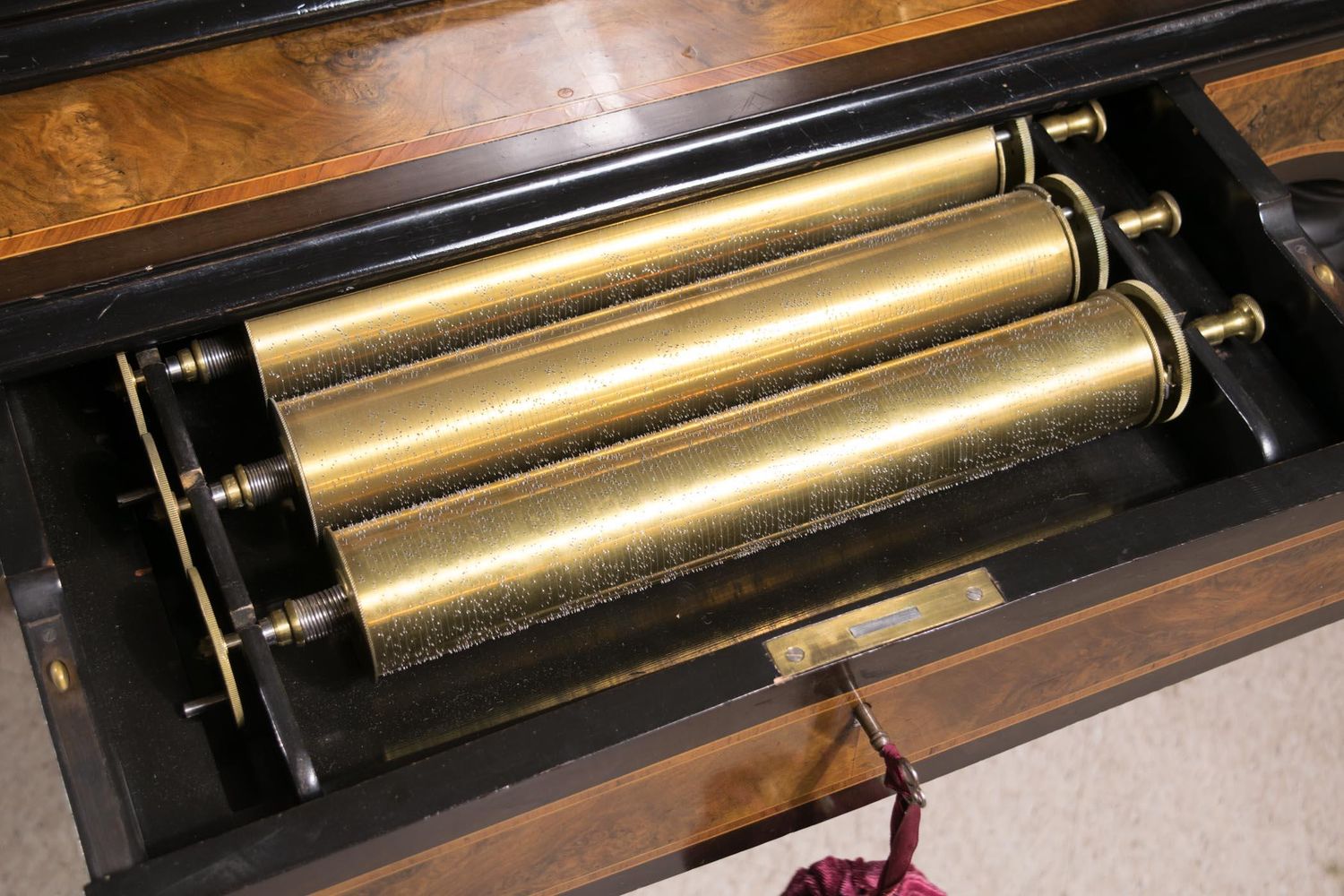Home>Devices & Equipment>Music Box>How To Describe Music Box Music


Music Box
How To Describe Music Box Music
Published: January 12, 2024
Discover how to describe the enchanting melodies of music box music. From delicate tinkling sounds to nostalgic tunes, learn to express the unique charm of music box melodies.
(Many of the links in this article redirect to a specific reviewed product. Your purchase of these products through affiliate links helps to generate commission for AudioLover.com, at no extra cost. Learn more)
Table of Contents
Introduction
Music boxes have been enchanting people for centuries with their delicate melodies and charming mechanics. These small, intricately designed boxes produce music through a series of revolving cylinders or disks, each etched with tiny pins that pluck the tuned teeth of a metal comb, creating beautiful sounds. The music played by a music box can vary greatly, from classical pieces to well-known folk tunes, making them a delightful addition to any collection or a unique gift for someone special.
Describing music box music can be a fascinating exercise, as it requires us to explore the nuances and characteristics of this enchanting art form. By examining different elements such as melody, tempo, rhythm, dynamics, instrumentation, harmonies, mood, and musical techniques, we can gain a deeper understanding of the music produced by these captivating little boxes.
In this article, we will delve into the intricacies of music box music, exploring how to describe its unique qualities and features. Whether you are a music box enthusiast, a musician, or simply curious about the magic of these musical treasures, this guide will provide you with valuable insights on how to effectively describe and appreciate music box melodies.
Understanding Music Box Music
Before we dive into describing music box melodies, it’s important to have a basic understanding of how this type of music is created. Music box music is typically produced through the rotation of a cylinder or disk, which is adorned with small pins or projections that pluck the metal comb inside the box. The patterns and positioning of these pins determine the specific notes and melodies that are produced when the cylinder or disk revolves.
Music boxes often have a limited range of notes, usually spanning a few octaves, which adds to their distinctive sound. The melodies played by music boxes tend to be simple and repetitive, with a charming and nostalgic quality that evokes feelings of innocence and nostalgia.
It’s also worth noting that music box music is typically played at a slower tempo compared to other musical genres. The leisurely pace allows for appreciation of each note and adds to the gentle and soothing nature of the melodies.
As we explore how to describe music box music, let’s keep these key characteristics in mind: the use of rotating cylinders or disks with pins, the limited range of notes, the simplicity and repetitiveness of the melodies, and the slower tempo.
Now, let’s move on to examining the various elements that contribute to the description of music box music, starting with the melody.
Describing the Melody
The melody is the heart of any piece of music, and the same holds true for music box music. When describing the melody of a music box tune, it’s helpful to consider its pitch, range, and overall character.
The pitch of the melody refers to the specific notes being played by the music box. Music boxes typically have a limited range of notes, often spanning only a few octaves. This limited range gives music box melodies a distinct sound that is both delicate and charming.
Additionally, the range of the melody can vary within a music box composition. Some melodies may have a narrow range, moving within a small set of notes, while others may have a wider range, encompassing more octaves.
Another aspect to consider when describing the melody is its overall character. Is it upbeat and lively, or is it melancholic and pensive? Music box melodies often have a whimsical and nostalgic quality, evoking feelings of warmth and innocence. They can transport us to a bygone era and create a sense of tranquility.
When describing a music box melody, you can use words like gentle, lilting, enchanting, or even magical to capture its unique character. Pay attention to the specific sequence of notes and how they flow together harmonically.
To enhance your description of the melody, you can also refer to any recognizable tunes or similarities to well-known songs. For example, you might say that the melody resembles a traditional lullaby or a popular classical piece.
By focusing on the pitch, range, and character of the melody, you can effectively describe the enchanting qualities of music box music and convey its nostalgic and captivating nature. Now, let’s move on to analyzing the tempo and rhythm of music box compositions.
Analyzing the Tempo and Rhythm
The tempo and rhythm of music box music play a crucial role in shaping its overall feel and atmosphere. Music boxes tend to have a slower tempo compared to other genres of music, which contributes to their calming and soothing nature.
When describing the tempo of music box music, you can use words like gentle, leisurely, or unhurried. This slower pace allows for each note to be savored and appreciated, creating a sense of tranquility and relaxation.
The rhythm of music box melodies is often repetitive and predictable. The revolving cylinder or disk with its pins plucks the tuned teeth of a metal comb at regular intervals, creating a consistent and steady rhythm. This rhythmic pattern can be described as regular, measured, and even hypnotic.
While music box rhythms may lack complexity compared to other musical styles, they possess a charm of their own. The repetitive nature of the rhythm adds to the soothing and comforting quality of the music, creating a sense of familiarity and nostalgia.
When describing the rhythm of music box music, you can draw attention to the consistent and predictable nature of the beat. Use words like repetitive, hypnotic, or even mesmerizing to portray the rhythm’s unique character.
Additionally, you can observe any variations in the rhythmic patterns within a music box composition. Some melodies may have slight variations in rhythm, creating subtle changes that add interest and depth to the overall piece.
By analyzing the tempo and rhythm of music box music and using descriptive language to capture their unique qualities, you can paint a vivid picture of the enchanting and soothing nature of these melodies. Next, let’s explore the dynamics of music box compositions.
Examining the Dynamics
Dynamics refer to the variations in volume and intensity within a piece of music. While music box music may not have as much dynamic range as other musical genres, there are still subtle nuances to consider when describing the dynamics of a music box composition.
Music box melodies typically have a soft and delicate sound due to their small size and mechanical nature. The volume tends to be consistent throughout the piece, without drastic changes or sudden bursts of loudness. However, there can still be subtle variations in the intensity of the sound.
When describing the dynamics of music box music, you can use words like gentle, soft, or even ethereal to convey the delicate nature of the volume. The melodies often create a serene and calming ambiance, evoking a sense of peace and tranquility.
Keep in mind that despite the limited dynamic range, there can be differences in the way the music box is played. Some melodies may have slightly stronger plucking of the metal comb, creating a slightly more pronounced sound. Others may have a lighter touch, resulting in a softer and more gentle tone.
Additionally, you might observe any subtle crescendos or decrescendos within the music box melody. These gradual changes in volume can add depth and emotion to the composition, even within the confines of the music box’s inherent limitations.
By examining the dynamics of music box music and using descriptive language to convey the soft and delicate volume, you can effectively capture the enchanting and peaceful nature of these melodies. Now, let’s move on to identifying the instrumentation of music box compositions.
Identifying the Instrumentation
When describing music box music, it’s important to consider the unique instrumentation that produces these captivating melodies. Music boxes typically feature a metal comb with tuned teeth, which is responsible for producing the sound when plucked by the pins or projections on the revolving cylinder or disk.
The sound of the metal comb in a music box can be described as delicate, bell-like, or even whimsical. Its distinct timbre adds to the charm and nostalgic appeal of music box music.
While the metal comb is the primary instrument in music box compositions, it’s worth noting that some music boxes also incorporate additional elements. For example, certain music boxes may include tiny bells, chimes, or percussion instruments that produce additional embellishments or accents in the melody.
When identifying the instrumentation of music box music, you can focus on the unique timbre and characteristics of the metal comb. Use descriptive words like tinkling, shimmering, or even crystalline to convey the delicate and ethereal nature of the sound.
If you notice any additional instruments or embellishments in a particular music box composition, you can mention them to highlight the unique features and variations within the piece.
By paying attention to the instrumentation of music box music and using descriptive language to capture its distinct timbre, you can effectively convey the whimsical and enchanting nature of these melodies. Next, let’s decode the harmonies present in music box compositions.
Decoding the Harmonies
Harmony is an essential element in music that adds richness and depth to a composition. While music box music may have simpler harmonic structures compared to complex orchestral or choral pieces, there are still harmonies to be explored and described.
Music box melodies often utilize simple chord progressions or arpeggios to create harmonies. These harmonies provide a foundation and support for the melody, enhancing the overall musical experience.
When decoding the harmonies in music box compositions, you can listen for the underlying chords that support the melody. Pay attention to the intervals between the notes and the overall harmonic structure. Are the harmonies major or minor? Do they create a sense of tension or resolution?
While music box harmonies may be straightforward, they can still evoke emotions and add depth to the melodies. Use descriptive words like sweet, serene, or even melancholic to capture the mood created by the harmonies.
It’s also worth mentioning that some music box compositions may employ more complex harmonic progressions, incorporating chromaticism or modulations within the limited range of notes. These variations in harmony can add intrigue and captivate the listener.
By decoding the harmonies present in music box music and using descriptive language to convey their simplicity or complexity, you can effectively paint a picture of the depth and emotional impact of these melodies. Now, let’s move on to interpreting the mood and emotions conveyed by music box compositions.
Interpreting the Mood and Emotions
Music has an incredible ability to evoke emotions and transport us to different moods and states of mind. Music box compositions are no exception, as they have a unique way of capturing feelings of nostalgia, tranquility, and innocence.
When interpreting the mood and emotions conveyed by music box music, it’s essential to pay attention to the overall character of the melody, the tempo, and the dynamics we discussed earlier. These elements play a significant role in shaping the emotional impact of the composition.
Music box melodies often possess a whimsical and nostalgic quality that can conjure up memories and evoke a sense of longing or wistfulness. They can transport us to a simpler time and create a feeling of comfort and serenity.
Words like dreamy, sentimental, or even enchanting can be used to describe the mood and emotions evoked by music box music. These melodies can inspire a sense of wonder and gentle happiness.
It’s important to note that the interpretation of mood and emotions in music is subjective and can vary from person to person. Different listeners may experience different emotions or find personal connections to the melodies. Therefore, it’s essential to consider your own emotional response and allow your description to reflect that.
By carefully listening and reflecting on the mood and emotions conveyed by music box music, you can use descriptive language to capture its nostalgic and tranquil nature effectively. Next, let’s explore the various musical techniques that can be present in music box compositions.
Exploring Musical Techniques
While music box music may be characterized by its simplicity, there are still musical techniques that can be found within these captivating compositions. These techniques add interest and depth to the melodies, enhancing the overall musical experience.
One common technique found in music box music is ornamentation. Ornamentation involves embellishing the melody with decorative notes or flourishes. These additional notes can be trills, turns, or grace notes that add a touch of ornamentation and elegance to the melody.
Another technique observed in music box compositions is variation. Variation involves modifying certain aspects of the melody while maintaining its essence. This can include altering the rhythm, adding decorative flourishes, or even changing the harmonic progression slightly. These variations keep the music engaging and prevent it from becoming repetitive.
Additionally, some music box compositions may incorporate musical motifs. Motifs are melodic or rhythmic fragments that are repeated throughout the composition, creating a sense of unity and cohesion. These motifs can be considered as unique musical signatures that make the piece recognizable and cohesive.
Other musical techniques that may be present in music box music include syncopation, where accentuated notes fall between the main beats, and diminuendo, a gradual decrease in volume towards the end of a phrase or piece. These techniques add complexity and musical interest to the melodies.
When exploring and describing the musical techniques in music box compositions, pay attention to the unique ornamentation, variations, motifs, and other subtle nuances that enhance the melodies. Use descriptive language to capture these techniques and their impact on the overall musical experience.
By delving into the various musical techniques present in music box music, we can further appreciate the intricacies and craftsmanship behind these melodies. Now, let’s conclude our exploration of music box music.
Conclusion
Music box music has a captivating charm that has delighted people for centuries. Describing and appreciating the nuances of music box melodies allows us to delve into the enchanting world of these intricately designed musical treasures.
In this article, we have explored various elements of music box music, including melody, tempo, rhythm, dynamics, instrumentation, harmonies, mood, and musical techniques. Each of these elements contributes to the unique and nostalgic feel of music box compositions.
We learned that music box melodies often have a limited range of notes, creating a delicate and whimsical sound. The slower tempo adds to their soothing and calming nature, allowing for each note to be savored. The repetitive and predictable rhythms create a comforting and familiar ambiance. The delicate dynamics and unique instrumentation of the metal comb contribute to the gentle and ethereal quality of the music.
Furthermore, decoding the harmonies helps us appreciate the simple yet impactful chords and progressions that provide a backdrop for the melody. Interpreting the mood and emotions allows us to experience the nostalgic and tranquil atmosphere of the music. Finally, exploring the various musical techniques present in music box compositions sheds light on the craftsmanship involved in creating these captivating melodies.
As you continue to listen to music box music, take note of the intricate melodies, the subtle variations, and the magical ambiance that these melodies create. Try to describe the pitch, range, character, tempo, rhythm, dynamics, instrumentation, harmonies, and emotions evoked. Allow yourself to be transported to a world of whimsy and nostalgia.
Whether you are a music box enthusiast, a musician, or simply curious about the magic of these lovely musical treasures, understanding and describing music box music will enhance your appreciation of its simplicity and beauty.
So, the next time you hear the gentle sound of a music box melody, take a moment to explore and describe the intricate details. Let the enchanting music transport you to a place of wonder and delight.











